Table of Contents
The UNESCO Sites in Italy have resulted from the recognition of 58 cultural and natural landmarks as UNESCO World Heritage Sites in Italy and 32 locations on the Italy UNESCO tentative list. These tourist sites in Italy are acknowledged for their unique and valuable cultural, natural, artistic, and historical significance and are preserved for future generations to enjoy.
In addition to these 58 sites on the Italy UNESCO list, many other places to travel to Italy are being considered for UNESCO recognition. These sites, listed on the tentative list, showcase the country’s rich cultural heritage and await approval to join the prestigious and famous World Heritage Sites list.
To help visitors discover these remarkable Italy tourist attractions, we have assembled an interactive map of the UNESCO sites in Italy.
Italy UNESCO Map
Click markers to show information and photo.
World Heritage Sites in Italy
UNESCO World Heritage Sites in Italy
There is 58 UNESCO World Heritage Site in Italy. All of these three sites are listed under the Cultural category.
- Sacri Monti of Piedmont and Lombardy
- 18th-Century Royal Palace at Caserta with the Park, the Aqueduct of Vanvitelli, and the San Leucio Complex
- Arab-Norman Palermo and the Cathedral Churches of Cefalú and Monreale
- Archaeological Area and the Patriarchal Basilica of Aquileia
- Archaeological Area of Agrigento
- Archaeological Areas of Pompei, Herculaneum and Torre Annunziata
- Assisi, the Basilica of San Francesco and Other Franciscan Sites
- Botanical Garden (Orto Botanico), Padua
- Castel del Monte
- Cathedral, Torre Civica and Piazza Grande, Modena
- Church and Dominican Convent of Santa Maria delle Grazie with “The Last Supper” by Leonardo da Vinci
- Cilento and Vallo di Diano National Park with the Archeological Sites of Paestum and Velia, and the Certosa di Padula
- City of Verona
- City of Vicenza and the Palladian Villas of the Veneto
- Costiera Amalfitana
- Crespi d’Adda
- Early Christian Monuments of Ravenna
- Etruscan Necropolises of Cerveteri and Tarquinia
- Ferrara, City of the Renaissance, and its Po Delta
- Genoa: Le Strade Nuove and the system of the Palazzi dei Rolli
- Historic Centre of Florence
- Historic Centre of Naples
- Historic Centre of Rome, the Properties of the Holy See in that City Enjoying Extraterritorial Rights and San Paolo Fuori le Mura
- Historic Centre of San Gimignano
- Historic Centre of Siena
- Historic Centre of the City of Pienza
- Historic Centre of Urbino
- Ivrea, industrial city of the 20th century
- Late Baroque Towns of the Val di Noto (South-Eastern Sicily)
- Le Colline del Prosecco di Conegliano e Valdobbiadene
- Longobards in Italy. Places of the Power
- Mantua and Sabbioneta
- Medici Villas and Gardens in Tuscany
- Padua’s fourteenth-century fresco cycles
- Piazza del Duomo, Pisa
- Portovenere, Cinque Terre, and the Islands (Palmaria, Tino and Tinetto)
- Prehistoric Pile Dwellings around the Alps
- Residences of the Royal House of Savoy
- Rhaetian Railway in the Albula / Bernina Landscapes
- Rock Drawings in Valcamonica
- Su Nuraxi di Barumini
- Syracuse and the Rocky Necropolis of Pantalica
- The Trulli of Alberobello
- The Great Spa Towns of Europe
- The Porticoes of Bologna
- The Sassi and the Park of the Rupestrian Churches of Matera
- Val d’Orcia
- Venetian Works of Defence between the 16th and 17th Centuries: Stato da Terra – Western Stato da Mar
- Venice and its Lagoon
- Villa Adriana (Tivoli)
- Villa d’Este, Tivoli
- Villa Romana del Casale
- Vineyard Landscape of Piedmont: Langhe-Roero and Monferrato
- Ancient and Primeval Beech Forests of the Carpathians and Other Regions of Europe
- Isole Eolie (Aeolian Islands)
- Monte San Giorgio
- Mount Etna
- The Dolomites
UNESCO World Heritage Sites in Italy are protected locations for their cultural and natural importance.
Sacri Monti of Piedmont and Lombardy

The Sacri Monti of Piedmont and Lombardy is a UNESCO World Heritage Site in Piedmont and Lombardy, Italy. These sacred mountains are home to nine religious complexes, each featuring chapels, shrines, and other structures. Built between the 16th and 17th centuries, these sites were designed to evoke an emotional and spiritual experience through their architectural beauty and religious artworks. The Sacri Monti are remarkable for their artistic and cultural significance and stunning natural surroundings, offering visitors a unique blend of religious devotion and scenic beauty.
18th-Century Royal Palace at Caserta with the Park, the Aqueduct of Vanvitelli, and the San Leucio Complex

The 18th-Century Royal Palace at Caserta, along with its Park, the Aqueduct of Vanvitelli, and the San Leucio Complex, is a UNESCO World Heritage Site in Italy. This magnificent palace, known as the “Versailles of Italy,” was commissioned by King Charles VII of Naples and constructed in the late 18th century. It is a remarkable example of Baroque and Neoclassical architecture, encompassing vast gardens and a grand park. The Aqueduct of Vanvitelli, an impressive engineering feat, supplied water to the palace and its surroundings. The San Leucio Complex, situated nearby, was an innovative silk manufacturing center and a model community during the Enlightenment. Together, these elements form a unique and historically significant site that showcases the opulence, artistry, and cultural significance of the 18th-century Italian monarchy.
Arab-Norman Palermo and the Cathedral Churches of Cefalú and Monreale
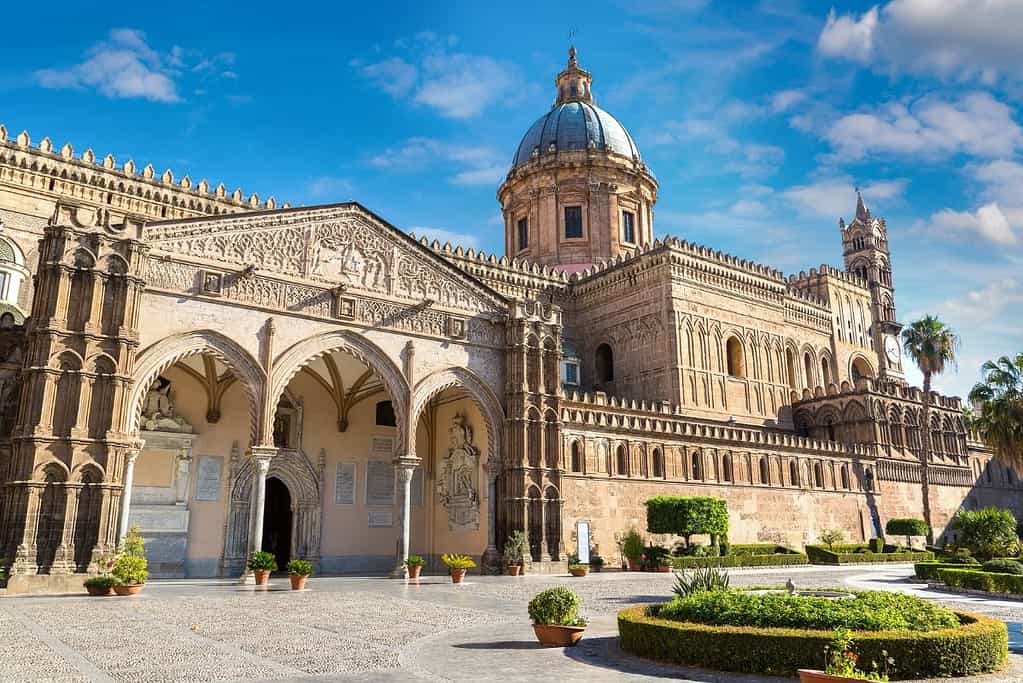
Arab-Norman Palermo and the Cathedral Churches of Cefalú and Monreale, located in Sicily, Italy, are UNESCO World Heritage Sites. This site showcases the unique blend of Arab, Byzantine, and Norman architectural styles, reflecting the historical and cultural exchanges during the medieval period. The Arab-Norman Palermo consists of several magnificent palaces, churches, and other structures, such as the Palazzo dei Normanni and the stunning Cathedral of Palermo. In Cefalú, the Cathedral Church is a remarkable example of Norman architecture, featuring intricate mosaics and a beautiful facade. Lastly, the Cathedral of Monreale boasts awe-inspiring Byzantine mosaics and is considered a masterpiece of the Arab-Norman style. These sites collectively represent the rich cultural heritage and architectural brilliance of Sicily’s past.
Archaeological Area and the Patriarchal Basilica of Aquileia

The Archaeological Area and the Patriarchal Basilica of Aquileia is a UNESCO World Heritage Site in Italy. This site holds great historical significance as it was once a prosperous Roman city and an important center of early Christianity. The archaeological area showcases impressive remains of the ancient city, including the Roman forum, residential buildings, and intricate mosaics. The site’s focal point is the magnificent Patriarchal Basilica, an exceptional example of early Christian architecture adorned with stunning frescoes and intricate floor mosaics. This UNESCO site offers visitors a unique opportunity to delve into Aquileia’s rich history and cultural heritage.
Archaeological Area of Agrigento

The Archaeological Area of Agrigento is a UNESCO World Heritage Site in Sicily, Italy. It showcases the well-preserved remains of the ancient Greek city of Akragas, known today as Agrigento. The site is renowned for its exceptional collection of Doric temples, including the iconic Temple of Concordia, which stands as a testament to the architectural brilliance of the ancient Greeks. The Archaeological Area of Agrigento offers visitors a captivating journey through history, with its stunning temples, ancient streets, and remnants of a once-thriving civilization. It stands as a remarkable testament to the rich cultural heritage of ancient Sicily.
Archaeological Areas of Pompei, Herculaneum and Torre Annunziata
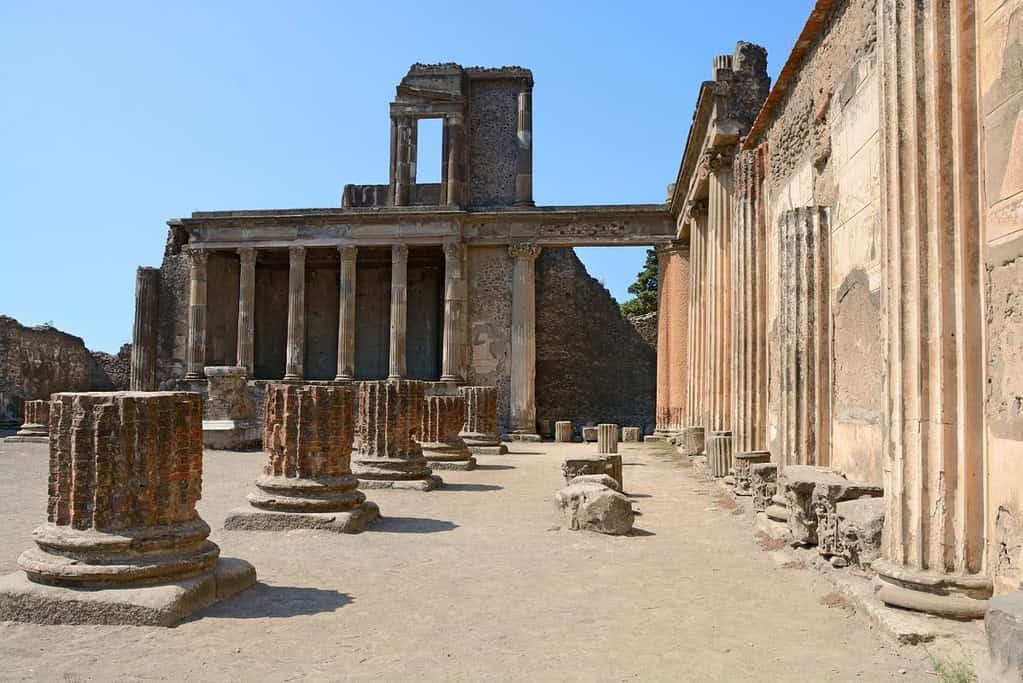
The Archaeological Areas of Pompeii, Herculaneum, and Torre Annunziata in Italy are UNESCO World Heritage Sites of immense historical significance. These sites offer a unique glimpse into the ancient Roman civilization that thrived in the region. Pompeii, famously buried under volcanic ash during the eruption of Mount Vesuvius in 79 AD, showcases remarkably preserved structures, streets, and even human remains, providing a vivid snapshot of daily life in a bustling Roman city. Herculaneum, also devastated by the same eruption, unveils beautifully preserved villas, frescoes, and wooden furniture, offering a more intimate insight into Roman residential life. Meanwhile, Torre Annunziata is home to the Villa Oplontis, an opulent Roman villa showcasing remarkable frescoes and architectural features. These archaeological areas are a treasure trove for historians, archaeologists, and visitors, preserving the Roman Empire’s extraordinary legacy.
Assisi, the Basilica of San Francesco, and Other Franciscan Sites
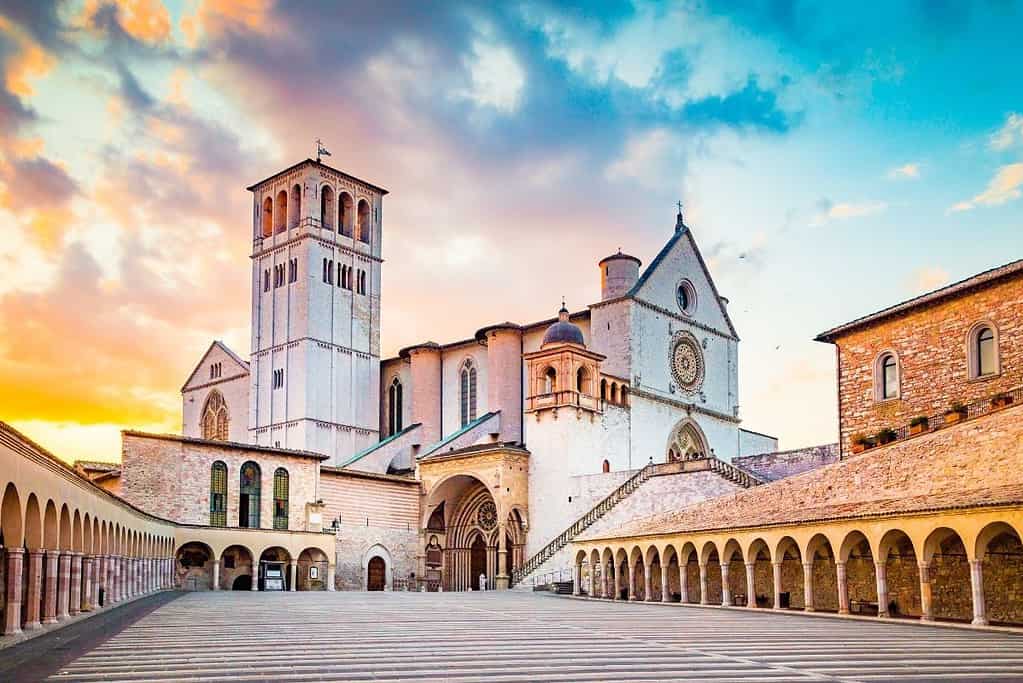
Assisi, located in Italy, is a UNESCO World Heritage Site renowned for its rich history and religious significance. At the heart of this enchanting town lies the Basilica of San Francesco, an architectural masterpiece that serves as a spiritual haven for countless pilgrims. The basilica is dedicated to Saint Francis of Assisi, the beloved patron saint of animals and the environment. Its stunning frescoes, created by renowned artists like Giotto, beautifully depict the life of Saint Francis. Beyond the basilica, Assisi boasts numerous Franciscan sites that offer a glimpse into the saint’s life, including the Eremo delle Carceri, a tranquil hermitage nestled amidst the peaceful woodlands. Exploring Assisi and its Franciscan sites is a truly transformative experience, inviting visitors to connect with the essence of Saint Francis and his teachings of compassion, simplicity, and love for all creatures.
Botanical Garden (Orto Botanico), Padua

The Botanical Garden (Orto Botanico) in Padua, Italy, is a UNESCO World Heritage Site. Established in 1545, it is the oldest academic botanical garden in the world that is still in its original location. The garden boasts a rich collection of plants showcasing native and exotic species. It has played a significant role in developing botanical science, serving as a center for research and education for centuries. With its beautifully designed layout and diverse flora, the Botanical Garden of Padua offers visitors a tranquil and educational experience, making it a must-visit destination for nature enthusiasts and history lovers.
Castel del Monte

Castel del Monte is a UNESCO World Heritage Site in the Apulia region of Italy. This magnificent castle, built in the 13th century, showcases a unique fusion of architectural styles, blending medieval, Islamic, and classical design elements. Its octagonal shape, with eight perfectly symmetrical towers, is an architectural marvel of its time. The castle’s interior features intricate details and decorative elements, including beautiful marble floors and stunning frescoes. With its commanding presence atop a hill, Castel del Monte offers breathtaking panoramic views of the surrounding landscape, making it a true gem of historical and cultural significance.
Cathedral, Torre Civica and Piazza Grande, Modena
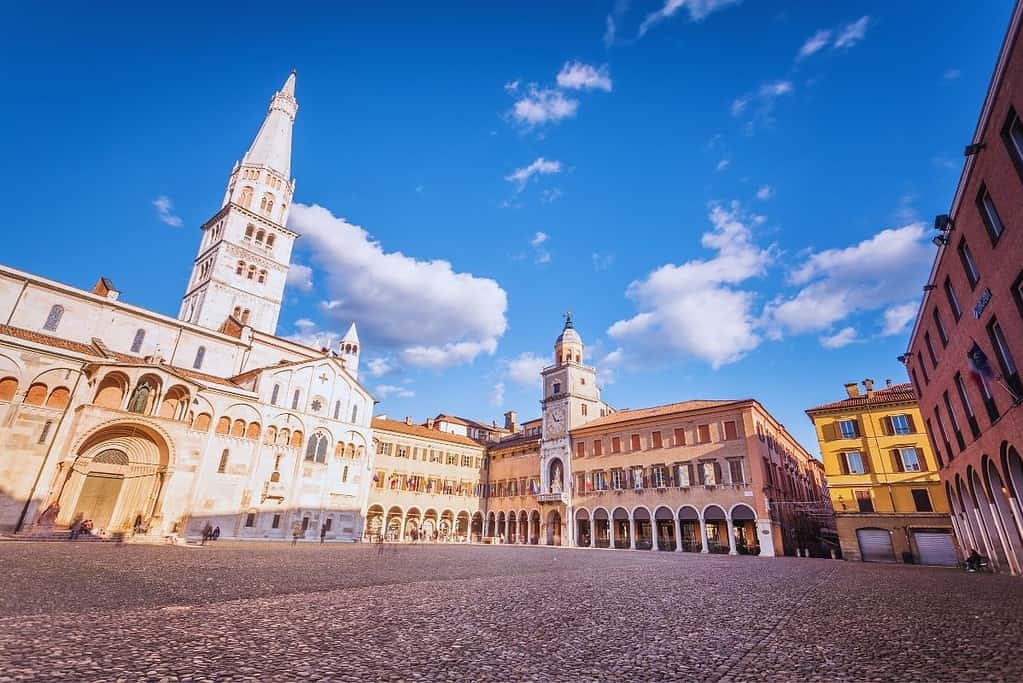
The Cathedral, Torre Civica, and Piazza Grande in Modena, Italy, collectively form a UNESCO World Heritage Site. The Cathedral, also known as the Modena Cathedral or Duomo di Modena, is a magnificent example of Romanesque architecture. Its stunning façade features intricate sculptures and reliefs, while the interior boasts beautiful frescoes and a remarkable marble pulpit. The Torre Civica, known as the Ghirlandina Tower, stands tall beside the Cathedral, offering panoramic city views. The Piazza Grande is the heart of Modena, surrounded by charming medieval buildings and a vibrant hub for cultural events and local life. Together, these landmarks showcase the rich historical and artistic heritage of Modena.
Church and Dominican Convent of Santa Maria delle Grazie with “The Last Supper” by Leonardo da Vinci
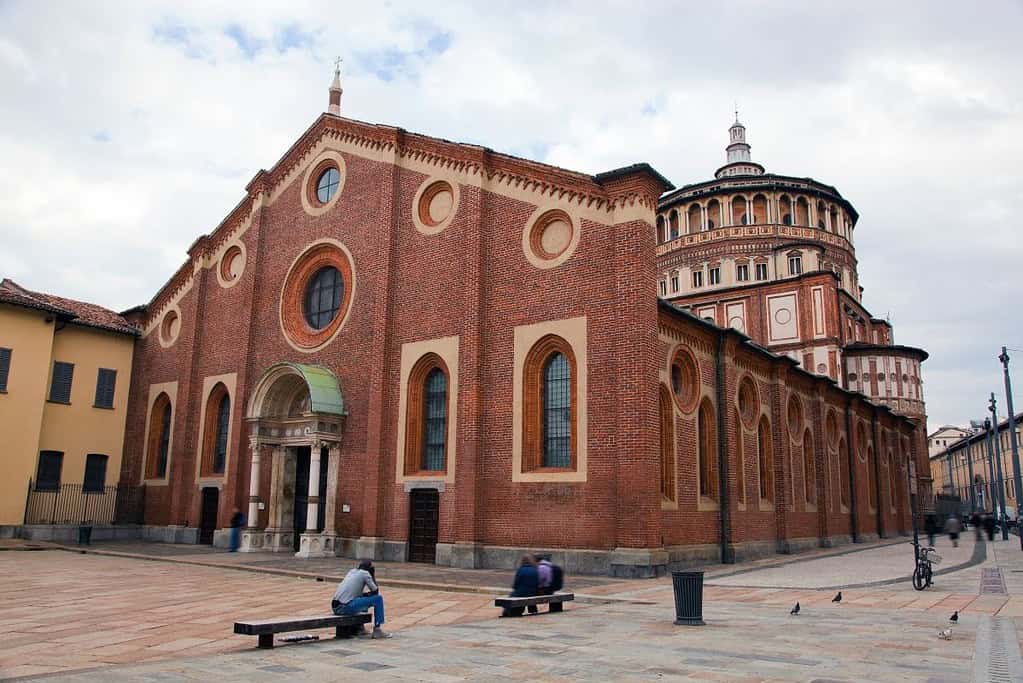
The Church and Dominican Convent of Santa Maria delle Grazie, located in Milan, Italy, is a UNESCO World Heritage Site renowned for its exceptional artwork, particularly “The Last Supper” by Leonardo da Vinci. This iconic mural painting depicts the biblical scene of Jesus Christ sharing his final meal with his disciples. Leonardo’s masterpiece is celebrated for its innovative composition, use of perspective, and emotive portrayal of the figures. The Church and Dominican Convent of Santa Maria delle Grazie stands as a testament to the artistic and cultural significance of the Renaissance period, attracting visitors worldwide who seek to admire this remarkable masterpiece.
Cilento and Vallo di Diano National Park with the Archeological Sites of Paestum and Velia and the Certosa di Padula
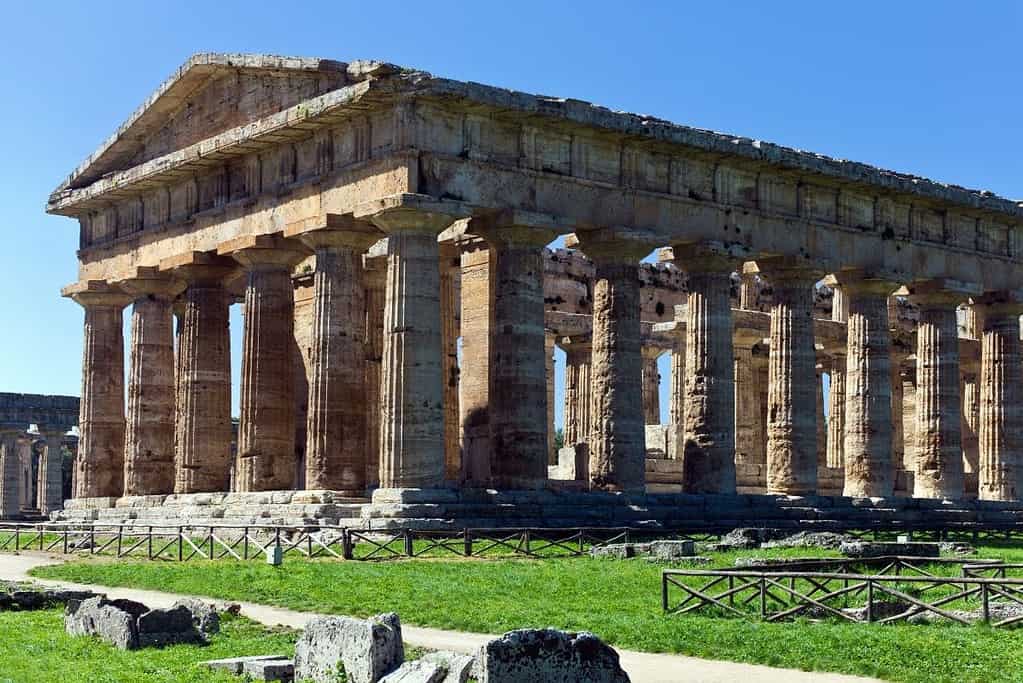
Cilento and Vallo di Diano National Park in southern Italy is a UNESCO World Heritage Site combining natural wonders with rich historical treasures. The park encompasses many stunning landscapes, including mountains, forests, and pristine coastline. Within this enchanting setting, visitors can explore the captivating Archeological Sites of Paestum and Velia, which showcase the remnants of ancient Greek and Roman civilizations. Paestum is renowned for its remarkably well-preserved Greek temples, while Velia offers fascinating ruins that span different periods of history. Another highlight within the park is the majestic Certosa di Padula, a magnificent Carthusian monastery that reflects the grandeur of the Baroque period. This UNESCO site presents a unique opportunity to immerse oneself in both the natural splendor and the rich cultural heritage of Cilento and Vallo di Diano National Park.
City of Verona

The City of Verona, located in northern Italy, is a UNESCO World Heritage Site renowned for its rich history and cultural significance. With its origins dating back to ancient times, Verona is a remarkable fusion of Roman, medieval, and Renaissance influences. The city is best known for its exceptionally well-preserved Roman amphitheater, the Arena di Verona, which hosts world-class opera performances and cultural events. Verona also boasts stunning architectural treasures, including the iconic Juliet’s House, associated with Shakespeare’s tragic love story of Romeo and Juliet. The city’s historic center, charming narrow streets, elegant palaces, and beautiful piazzas exude an enchanting ambiance that transports visitors back in time. Verona’s outstanding universal value lies in its exceptional architectural heritage and role as a vibrant testament to centuries of human creativity and cultural exchange.
The City of Vicenza and the Palladian Villas of the Veneto

The City of Vicenza and the Palladian Villas of the Veneto are a UNESCO World Heritage Site located in the Veneto region of Italy. The city of Vicenza is renowned for its exceptional architecture, particularly the works of the renowned architect Andrea Palladio. His elegant and harmonious designs have significantly influenced architectural styles worldwide. The Palladian Villas, scattered throughout the Veneto countryside, showcase Palladio’s genius, combining classical elements with innovative features. These villas, such as Villa Rotonda and Villa Emo, exemplify the Renaissance ideals of beauty, symmetry, and harmony with nature. Together, the City of Vicenza and the Palladian Villas offer a captivating glimpse into the architectural brilliance of the Italian Renaissance.
Costiera Amalfitana

The Costiera Amalfitana, also known as the Amalfi Coast, is a UNESCO World Heritage Site in Italy. This breathtaking coastline stretch stretches along the Sorrentine Peninsula’s southern edge, overlooking the sparkling Tyrrhenian Sea. The Amalfi Coast is renowned for its picturesque cliffside towns, colorful buildings, and stunning natural beauty. The towns of Amalfi, Positano, and Ravello are among the highlights, each offering unique charm and architectural marvels. Visitors can explore narrow cobblestone streets, visit historic churches and villas, and soak in the panoramic views from the coastal cliffs. With its blend of captivating landscapes and rich cultural heritage, the Costiera Amalfitana is a must-visit destination for travelers worldwide.
Crespi d’Adda
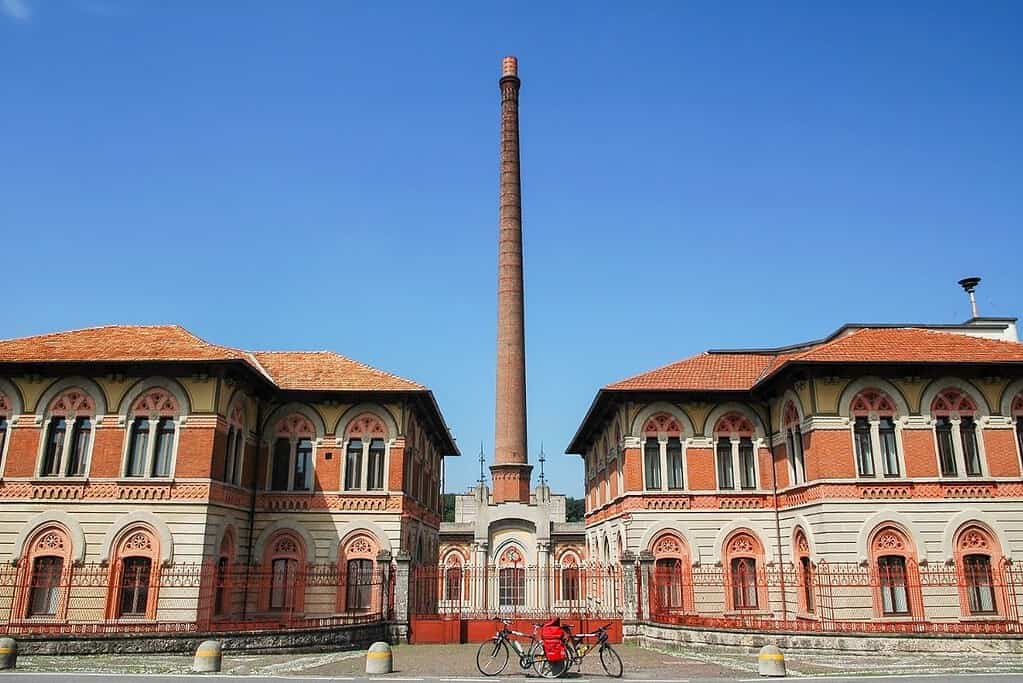
Crespi d’Adda is a UNESCO World Heritage Site located in Lombardy, Italy. It is an exceptional example of a 19th-century company town built around a cotton mill. The Crespi family established the town to provide housing, services, and amenities for the workers of the mill and their families. The industrial complex and the residential area form a harmonious and well-preserved ensemble that showcases the time’s social and urban planning concepts. Crespi d’Adda is a testament to the industrial heritage and the visionary approach to workers’ welfare during the Industrial Revolution.
Early Christian Monuments of Ravenna

The Early Christian Monuments of Ravenna is a UNESCO World Heritage Site in Ravenna, Italy. This site showcases a remarkable collection of early Christian and Byzantine religious buildings renowned for their exquisite mosaics and architectural significance. The monuments include the Basilica of San Vitale, which features stunning Byzantine mosaics depicting biblical scenes and imperial figures. The Mausoleum of Galla Placidia is another notable structure known for its beautiful mosaic decorations. The Baptistry of Neon and the Archiepiscopal Chapel are additional highlights, displaying intricate mosaics that exemplify the artistic and cultural heritage of early Christianity in Ravenna.
Etruscan Necropolises of Cerveteri and Tarquinia

The Etruscan Necropolises of Cerveteri and Tarquinia are UNESCO World Heritage Sites in Italy. These ancient burial grounds offer a fascinating glimpse into the mysterious Etruscan civilization that flourished around the 9th century BC. The necropolises are renowned for their intricate and well-preserved tombs, which feature intricate frescoes, sculptures, and artifacts that provide valuable insights into the Etruscan way of life, beliefs, and artistic techniques. Exploring these necropolises is like stepping back in time, allowing visitors to marvel at the Etruscan civilization’s rich history and cultural heritage.
Ferrara, City of the Renaissance, and its Po Delta
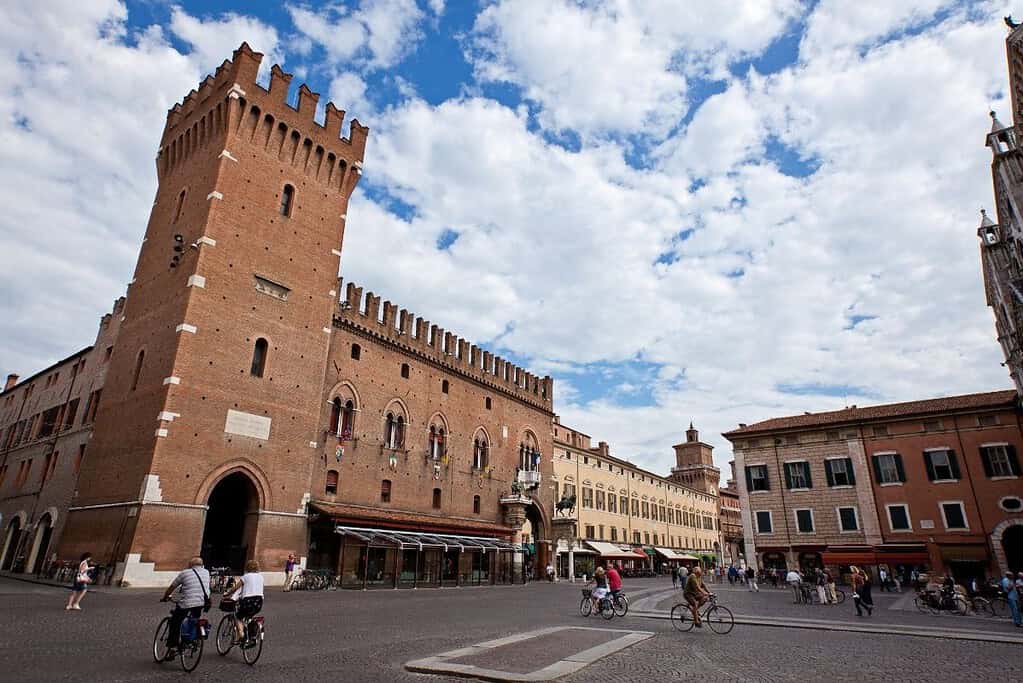
Ferrara, City of the Renaissance, and its Po Delta is a UNESCO World Heritage Site in Italy. This captivating site combines the remarkable city of Ferrara with the enchanting Po Delta region. Ferrara, known as the “City of the Renaissance,” showcases an exceptional collection of architectural treasures from the 14th to 16th centuries. Its well-preserved historic center boasts magnificent palaces, grand squares, and imposing medieval walls. On the other hand, the Po Delta offers a unique natural landscape of wetlands, lagoons, and dunes, providing a haven for diverse flora and fauna. This UNESCO site harmoniously blends cultural and natural beauty, offering visitors a captivating journey through history and nature.
Genoa: Le Strade Nuove and the system of the Palazzi dei Rolli

Genoa: Le Strade Nuove and the system of the Palazzi dei Rolli is a UNESCO World Heritage Site located in Genoa, Italy. The site showcases the city’s unique urban development and architectural heritage during the Renaissance and Baroque periods. Le Strade Nuove, meaning “New Streets,” refers to a network of grand avenues lined with magnificent palaces built by the Genoese aristocracy. These palaces, known as the Palazzi dei Rolli, were designated as lodging for important guests of the Republic of Genoa. The site offers a remarkable collection of palaces characterized by their elegant facades and lavish interiors, which glimpse the city’s prosperous past. Genoa: Le Strade Nuove and the system of the Palazzi dei Rolli stand as a testament to the city’s rich cultural and architectural heritage.
Historic Centre of Florence

The Historic Centre of Florence is a UNESCO World Heritage Site in Italy. It is renowned for its exceptional architectural and artistic heritage, reflecting the city’s immense cultural and historical significance. Florence flourished during the Renaissance, producing renowned figures such as Leonardo da Vinci and Michelangelo. The cityscape is adorned with breathtaking landmarks, including the iconic Florence Cathedral, the Uffizi Gallery, and the Ponte Vecchio. With its harmonious blend of stunning architecture, world-class museums, and rich cultural traditions, the Historic Centre of Florence is a testament to human creativity and artistic brilliance throughout the ages.
Historic Centre of Naples

The Historic Centre of Naples is a UNESCO World Heritage Site in Naples, Italy. With its rich history of over 2,800 years, this center is a remarkable testament to the layers of civilizations that have shaped the region. The city’s historic core combines ancient Roman, medieval, Renaissance, and Baroque architecture, creating a captivating visual tapestry. From the grandeur of the Royal Palace of Naples to the intricate detail of the Duomo di San Gennaro, the Historic Centre of Naples offers a captivating journey through time and an immersive experience of the city’s cultural heritage.
Historic Centre of Rome, the Properties of the Holy See in that City Enjoying Extraterritorial Rights, and San Paolo Fuori le Mura

The Historic Centre of Rome, the Properties of the Holy See in that City Enjoying Extraterritorial Rights, and San Paolo Fuori le Mura are UNESCO World Heritage Sites in Rome, Italy. The Historic Centre of Rome showcases the city’s remarkable architectural and historical legacy, including iconic landmarks such as the Colosseum, the Roman Forum, and the Pantheon. The Properties of the Holy See in that City are significant ecclesiastical properties that hold great religious and cultural value. San Paolo Fuori le Mura, also known as St. Paul’s Outside the Walls, is an ancient basilica with magnificent mosaics and a rich spiritual heritage. Together, these sites capture the essence of Rome’s rich history, artistic treasures, and religious significance.
Historic Centre of San Gimignano

The Historic Centre of San Gimignano is a UNESCO World Heritage Site in Tuscany, Italy. It is renowned for its exceptional medieval architecture and unique skyline, adorned with 14 remaining tower houses out of the original 72 that once graced the city. These towers were symbols of power and wealth during the Middle Ages. The historic center of San Gimignano offers visitors a journey back in time, with its well-preserved streets, squares, and buildings that showcase the prosperity and cultural significance of the town. It is a captivating destination that immerses visitors in medieval Italy’s rich history and charm.
Historic Centre of Siena
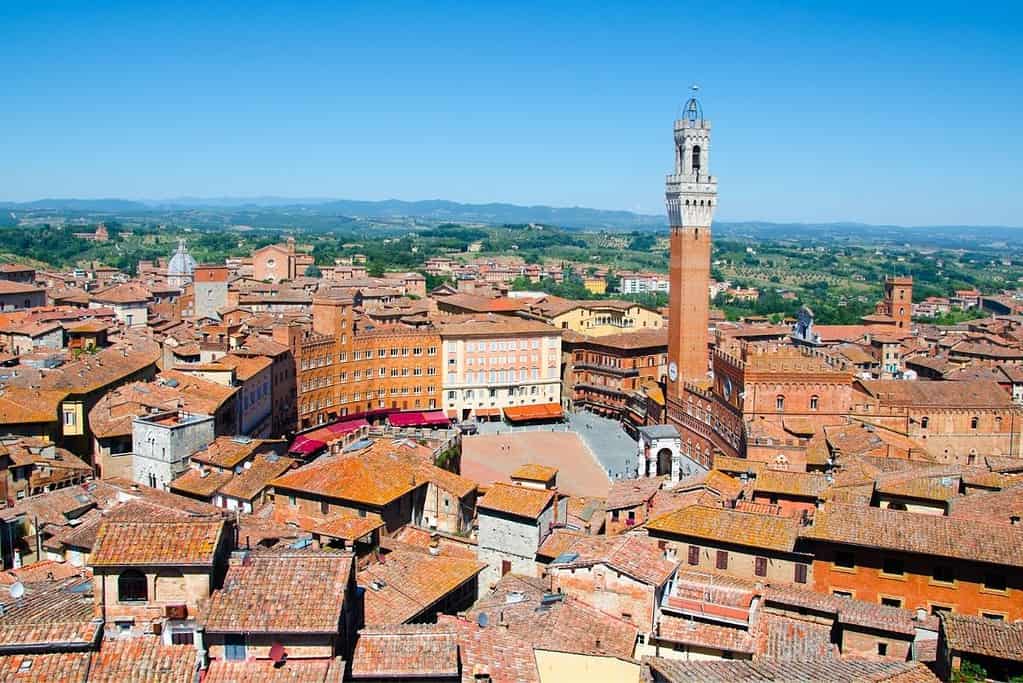
The Historic Centre of Siena is a UNESCO World Heritage Site located in the Tuscany region of Italy. It is renowned for its exceptional medieval architecture and well-preserved urban layout. The city is known for its unique fan-shaped main square, Piazza del Campo, which is surrounded by historic buildings and serves as the heart of Siena. The Cathedral of Santa Maria Assunta’s stunning black and white striped façade is a remarkable example of Italian Gothic architecture. The historic center also features numerous palaces, churches, and narrow winding streets that showcase the rich cultural heritage of Siena. With its harmonious blend of architectural treasures, the Historic Centre of Siena is a captivating destination for history enthusiasts and visitors alike.
Historic Centre of the City of Pienza

The Historic Centre of the City of Pienza is a UNESCO World Heritage Site in Tuscany, Italy. It is a remarkable example of Renaissance urban planning and architecture. Designed as an “ideal city” by the influential Renaissance architect Bernardo Rossellino, Pienza showcases harmonious and symmetrical buildings, beautiful piazzas, and well-preserved medieval and Renaissance structures. The city’s layout, perfectly aligned streets, and panoramic views of the surrounding countryside reflect the principles of humanist urban planning. Pienza is also renowned for its exceptional artistic and cultural heritage, including the stunning Cathedral and the Palazzo Piccolomini. Its unique combination of architectural beauty, historical significance, and cultural value make Pienza a genuinely captivating destination for visitors.
Historic Centre of Urbino

The Historic Centre of Urbino is a UNESCO World Heritage Site in Italy. It is renowned for its exceptional Renaissance architecture and rich cultural heritage. Urbino, a small hilltop town in the region of Marche, showcases an outstanding ensemble of well-preserved buildings and structures, including the majestic Ducal Palace, which was the seat of the Montefeltro dukes. The town’s layout, characterized by narrow streets and picturesque squares, evokes a sense of medieval charm. Urbino’s historic center also houses the University of Urbino, founded in the 16th century, which played a significant role in disseminating humanistic knowledge. The combination of its architectural beauty, artistic legacy, and educational importance makes the Historic Centre of Urbino a captivating destination for visitors and a testament to Italy’s rich cultural heritage.
Ivrea, an industrial city of the 20th century
Ivrea, located in Italy, is a remarkable UNESCO World Heritage Site known as the “industrial city of the 20th century.” It is a prime example of urban planning and architectural innovation during the industrial era. Designed by visionary Adriano Olivetti, Ivrea showcases a unique blend of modernist and rationalist architecture. The city’s layout and infrastructure were carefully crafted to accommodate industrial activities while prioritizing the well-being of its residents. Today, Ivrea is a testament to the harmonious integration of industry and urban development, offering visitors a glimpse into a transformative historical period.
Late Baroque Towns of the Val di Noto (South-Eastern Sicily)
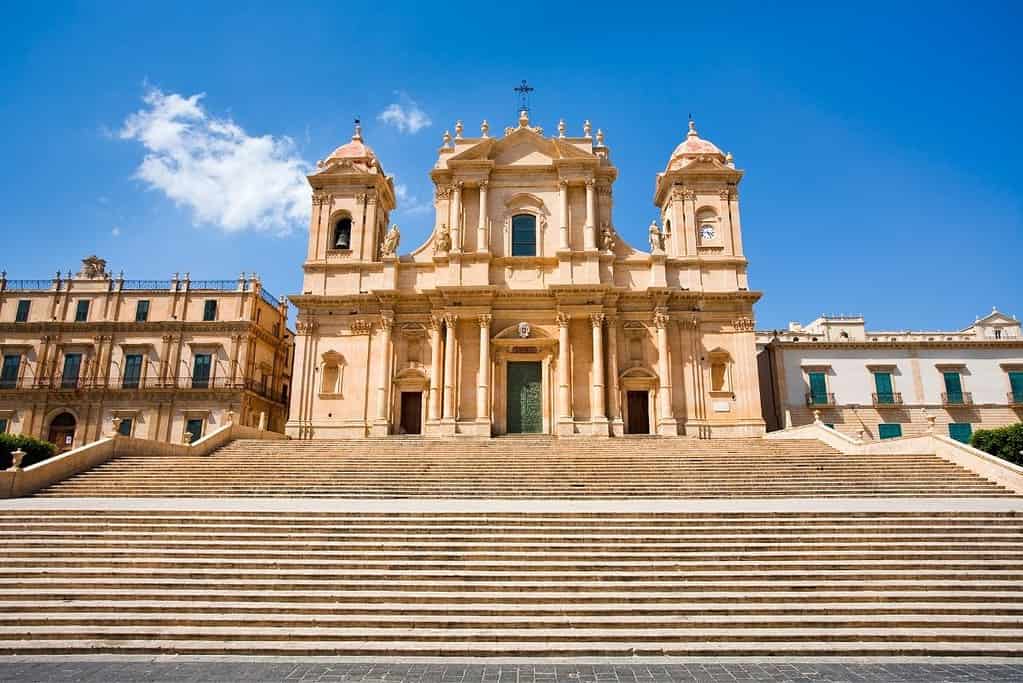
The Late Baroque Towns of the Val di Noto, located in South-Eastern Sicily, are a UNESCO World Heritage Site. These towns, including Noto, Caltagirone, Catania, Modica, Ragusa, and Scicli, showcase an exceptional display of Late Baroque architecture. Following a devastating earthquake in 1693, these towns were rebuilt with great artistic and urban planning achievements. The architectural style is characterized by intricate facades, grand churches, ornate palaces, and charming public squares. The Late Baroque Towns of the Val di Noto offer a captivating journey through Sicilian history and culture, enchanting visitors with their harmonious blend of art, architecture, and urban design.
Le Colline del Prosecco di Conegliano e Valdobbiadene
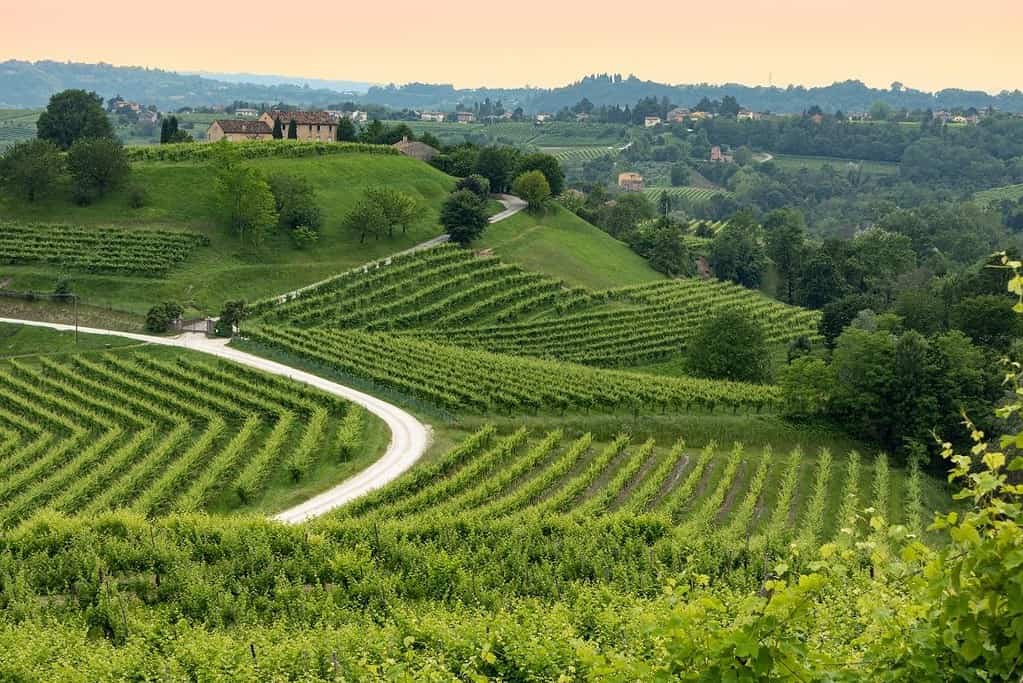
Le Colline del Prosecco di Conegliano e Valdobbiadene is a UNESCO World Heritage Site in Italy. This site encompasses the picturesque hills of Conegliano and Valdobbiadene, renowned for producing Prosecco wine. The landscape is characterized by terraced vineyards that create a stunning patchwork of greenery dotted with charming villages and historic wineries. The combination of the unique terrain, climate, and traditional winemaking techniques has resulted in the production of exceptional Prosecco wines. This UNESCO site not only celebrates the cultural and historical significance of the region but also recognizes its contribution to the world of winemaking.
Longobards in Italy. Places of the Power
The “Longobards in Italy. Places of the Power” is a UNESCO World Heritage Site in Italy. This site comprises seven locations that witness the presence of the Lombards, a Germanic people who ruled over a significant part of Italy from the 6th to the 8th centuries. These places include historical sites such as the Monastery of San Salvatore, the Church of Santa Sofia, and the Temple of Clitumnus. These sites showcase the Lombards’ unique architectural and cultural heritage, providing valuable insights into their history and influence in Italy during that period.
Mantua and Sabbioneta
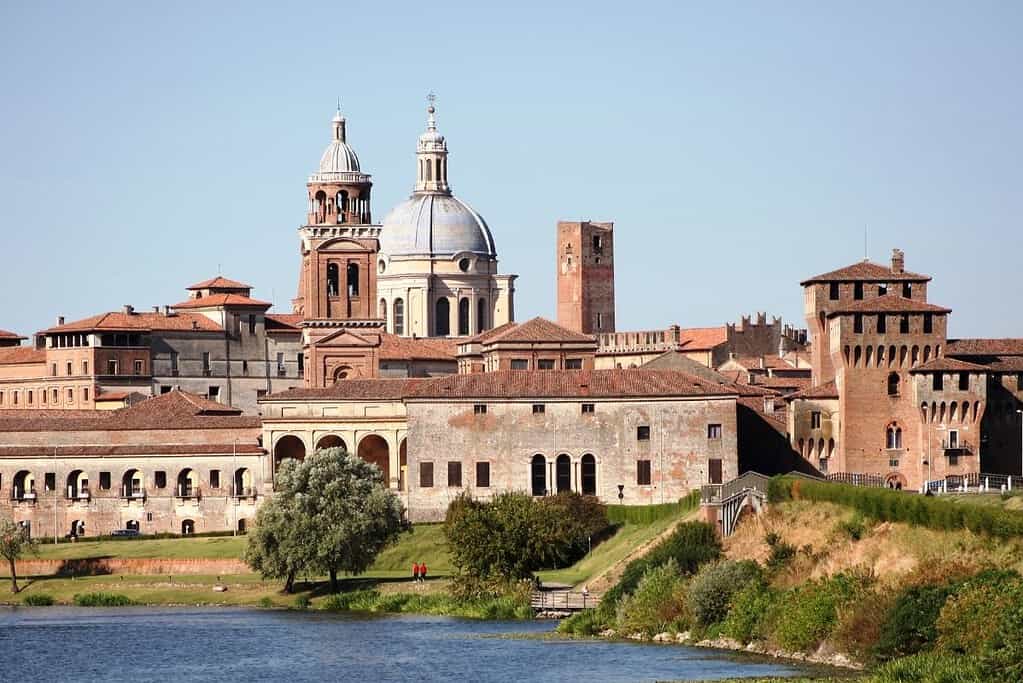
Mantua and Sabbioneta are UNESCO World Heritage Sites located in Italy. These two historic cities are renowned for their exceptional architectural and artistic value. Mantua, situated in the Lombardy region, boasts a rich history that dates back to Etruscan times. It showcases remarkable Renaissance and Baroque architecture, including the stunning Palazzo Ducale and the Rotonda di San Lorenzo. Sabbioneta, on the other hand, is a perfectly preserved Renaissance town, often referred to as an “ideal city” due to its meticulously planned layout and harmonious architecture. It features the majestic Palazzo Ducale and the Teatro all’Antica, a remarkable example of a Renaissance theater. Mantua and Sabbioneta offer visitors a captivating journey through Italy’s cultural heritage.
Medici Villas and Gardens in Tuscany

The Medici Villas and Gardens in Tuscany are a UNESCO World Heritage Site in Italy. This collection of luxurious villas and meticulously designed gardens showcases the wealth and artistic patronage of the influential Medici family during the Renaissance period. The villas, such as Villa di Castello, Villa La Petraia, and Villa del Poggio Imperiale, feature stunning architecture, exquisite frescoes, and opulent interiors that reflect the grandeur of the era. Surrounding the villas are beautifully landscaped gardens, including the Boboli Gardens in Florence, known for their geometric designs, intricate fountains, and charming pathways. The Medici Villas and Gardens capture Tuscany’s rich cultural heritage and the Medici dynasty’s enduring legacy.
Padua’s fourteenth-century fresco cycles

Padua’s fourteenth-century fresco cycles are a UNESCO World Heritage Site in Padua, Italy. These remarkable frescoes adorn the walls of various religious and civic buildings, showcasing the artistic mastery of the time. Notable among them is the Scrovegni Chapel, renowned for its vivid and emotive frescoes by the Italian painter Giotto. The cycles depict biblical scenes, including the life of Christ and the Virgin Mary, as well as allegorical and historical figures. The intricate details and vibrant colors of these frescoes transport visitors back in time, offering a captivating glimpse into the artistic and cultural heritage of the fourteenth century.
Piazza del Duomo, Pisa

Piazza del Duomo, located in Pisa, Italy, is a UNESCO World Heritage Site renowned for its architectural wonders. At the heart of the square stands the famous Leaning Tower of Pisa, an iconic symbol of Italy. Surrounding the tower are three magnificent structures: the Pisa Cathedral, the Pisa Baptistery, and the Camposanto Monumentale. These architectural marvels showcase remarkable medieval Italian design and craftsmanship. Piazza del Duomo offers visitors a breathtaking ensemble of historical and artistic significance, making it a must-see destination for travelers worldwide.
Portovenere, Cinque Terre, and the Islands (Palmaria, Tino and Tinetto)

Portovenere, Cinque Terre, and the Islands (Palmaria, Tino, and Tinetto) form a captivating UNESCO World Heritage Site in Italy. This breathtaking area showcases a unique blend of natural beauty and human creativity. With its picturesque harbor and colorful houses, Portovenere is the gateway to the Cinque Terre, a collection of five charming coastal villages perched along the rugged Italian Riviera. Each village, namely Riomaggiore, Manarola, Corniglia, Vernazza, and Monterosso al Mare, boasts its distinct character and stunning views of the turquoise sea. The Palmaria, Tino, and Tinetto islands further enrich the site, which offers a peaceful retreat and showcases ancient fortifications. Portovenere, Cinque Terre, and the Islands create an enchanting destination that captivates visitors with its natural splendor and cultural heritage.
Prehistoric Pile Dwellings around the Alps
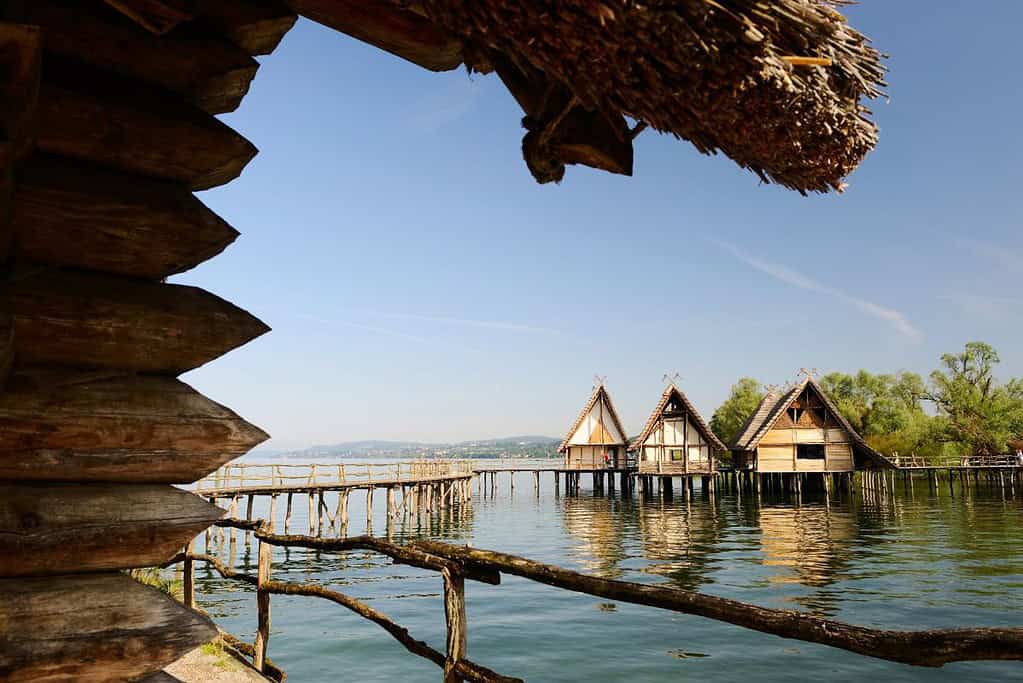
The Prehistoric Pile Dwellings around the Alps is a UNESCO World Heritage Site that spans several countries in the Alpine region of Europe. These pile dwellings are remnants of ancient human settlements built on lakeshores or wetlands. Dating back to the Neolithic and Bronze Ages, these dwellings offer valuable insights into prehistoric life and the early interactions between humans and their natural environment. The site showcases the innovative construction techniques used by our ancestors and artifacts and organic remains that provide a glimpse into their daily activities and cultural practices. Preserving and studying these pile dwellings contributes to our understanding of human history and the development of civilization in this remarkable alpine region.
Residences of the Royal House of Savoy

The Royal House of Savoy Residences is a UNESCO World Heritage Site in Italy. This exceptional site includes several palaces, castles, and residences once home to the prestigious House of Savoy, a royal dynasty that significantly shaped Italian history. The prominent structures within the site are the Royal Palace of Turin, the Palace of Venaria, and the Castle of Moncalieri. These architectural masterpieces showcase a blend of different styles, from Baroque to Neoclassical, and provide a glimpse into the opulent lives of the Savoyard rulers. Today, these residences are remarkable testaments to Italy’s rich cultural heritage and attract visitors worldwide.
Rhaetian Railway in the Albula / Bernina Landscapes

The Rhaetian Railway in the Albula/Bernina Landscapes is a UNESCO World Heritage Site in Switzerland. This remarkable railway stretches through the stunning landscapes of the Albula and Bernina regions, offering passengers breathtaking views of snow-capped mountains, deep valleys, and charming alpine villages. The railway’s engineering marvels, such as viaducts and tunnels, seamlessly blend with the natural surroundings, creating a harmonious fusion of human ingenuity and pristine nature. It is a testament to the exceptional engineering achievements of the early 20th century and remains an enchanting way to explore the picturesque Swiss Alps.
Rock Drawings in Valcamonica

Rock Drawings in Valcamonica is a UNESCO World Heritage Site located in the Lombardy region of Italy. This site is home to one of the world’s largest collections of prehistoric petroglyphs, dating back to the Neolithic and Iron Ages. The rock drawings depict a wide range of subjects, including animals, human figures, and intricate symbols, offering a fascinating glimpse into the ancient cultures that once inhabited the region. The site’s remarkable preservation and sheer quantity of rock art make it a significant archaeological and cultural treasure, providing valuable insights into early civilizations’ history and artistic expressions.
Su Nuraxi di Barumini
Su Nuraxi di Barumini is a UNESCO World Heritage Site in Sardinia, Italy. It is an ancient nuraghe complex, with unique stone towers built by the Nuragic civilization. The site showcases the impressive architectural skills of this prehistoric civilization, with the main tower dating back to the 16th century BCE. Visitors can explore the well-preserved remains of the nuraghe, including its intricate maze-like structure, defensive walls, and chambers. Su Nuraxi di Barumini offers a fascinating glimpse into the rich history and engineering prowess of the Nuragic people.
Syracuse and the Rocky Necropolis of Pantalica

Syracuse and the Rocky Necropolis of Pantalica, located in southeastern Sicily, Italy, are designated as a UNESCO World Heritage Site. Syracuse, a historic city with a rich cultural heritage, was once a powerful Greek city-state and later an important Roman and Byzantine center. The city showcases impressive archaeological sites, including the Greek Theatre, the Ear of Dionysius, and the Temple of Apollo. Just outside Syracuse, the Rocky Necropolis of Pantalica offers a unique experience with its vast necropolis carved into limestone cliffs. This extraordinary site features thousands of ancient burial chambers and impressive rock-cut tombs, providing valuable insights into the island’s early history and funerary practices. Together, Syracuse and the Rocky Necropolis of Pantalica offer a captivating journey through ancient civilizations and are a testament to the enduring legacy of the region.
The Trulli of Alberobello
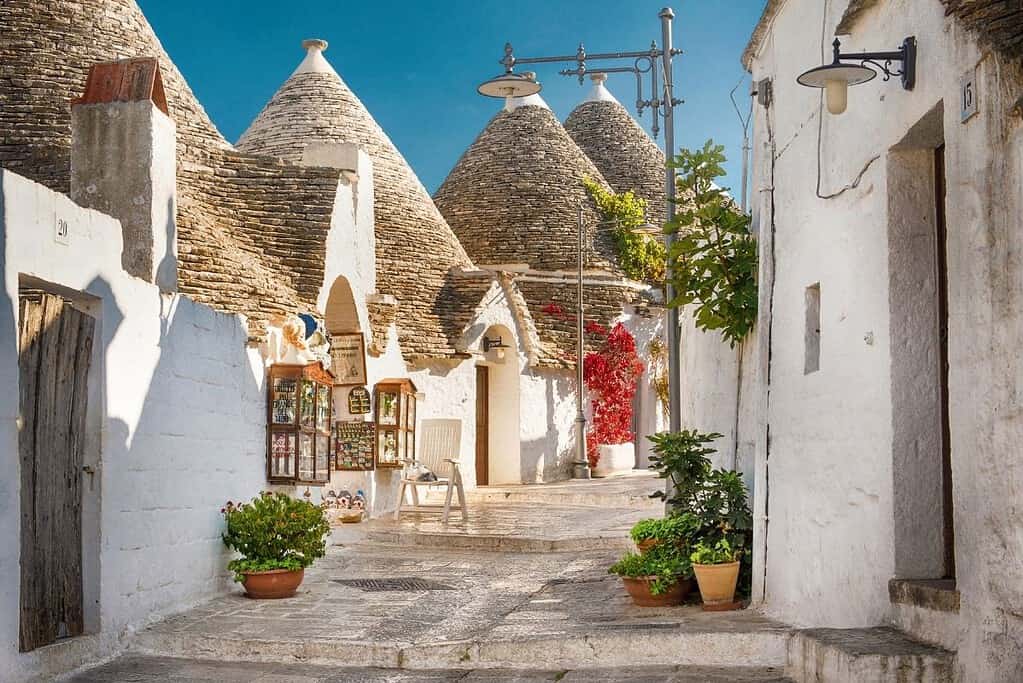
The Trulli of Alberobello is a UNESCO World Heritage Site located in the Apulia region of southern Italy. This unique and enchanting village is famous for its traditional cone-shaped houses called trulli, made of limestone and characterized by their distinctive white walls and conical roofs. These traditional structures date back to the 14th century and have become an iconic symbol of the region. Walking through the narrow streets of Alberobello, visitors are immersed in a captivating atmosphere, surrounded by the charm and history of these ancient dwellings. The Trulli of Alberobello offers a glimpse into the past and serves as a testament to the ingenuity and craftsmanship of generations.
The Great Spa Towns of Europe
The Great Spa Towns of Europe in Italy is a collection of UNESCO World Heritage Sites that showcase the rich history and cultural significance of spa towns. These towns, including Montecatini Terme, Chianciano Terme, and Bagni di Lucca, have attracted visitors for centuries with their natural thermal springs and therapeutic properties. The architectural grandeur of the spa buildings reflects the elegance and style of the Belle Époque era, offering a glimpse into the luxurious lifestyle of the past. These charming towns provide rejuvenating spa experiences and a captivating journey through time, where visitors can immerse themselves in the healing traditions and enchanting ambiance of these historic European spa destinations.
The Porticoes of Bologna

The Porticoes of Bologna is a UNESCO World Heritage Site in Bologna, Italy. This unique architectural feature consists of a network of covered walkways or porticoes stretching kilometers, creating a captivating urban landscape. The porticoes date back to medieval times and were initially constructed as a solution to the growing population and the need for additional living space. Today, they serve as shelter from the elements and a vibrant social and cultural hub. Walking beneath the elegant arches, visitors can admire the intricate designs, diverse architectural styles, and historical significance of these iconic structures, which have become an integral part of Bologna’s identity.
The Sassi and the Park of the Rupestrian Churches of Matera

The Sassi and the Park of the Rupestrian Churches of Matera is a UNESCO World Heritage Site in Matera, Italy. This site is renowned for its unique and ancient cave dwellings known as the Sassi. These dwellings are carved directly into the rock, creating a fascinating labyrinth of houses, churches, and other structures. The Sassi offers a glimpse into Matera’s ancient way of life, showcasing the inhabitants’ resourcefulness and ingenuity. In addition to the Sassi, the site also includes the Park of the Rupestrian Churches, which features a collection of rock-cut churches adorned with beautiful frescoes, reflecting the region’s rich cultural and religious history. Visiting the Sassi and the Park of the Rupestrian Churches is like stepping back in time and experiencing a truly remarkable architectural and historical treasure.
Val d’Orcia

Val d’Orcia is a UNESCO World Heritage Site located in Tuscany, Italy. This breathtaking region is renowned for its picturesque landscapes, charming medieval towns, and rolling hills dotted with cypress trees. Val d’Orcia’s beauty has inspired countless artists and photographers throughout the years. The area is known for its agricultural traditions, particularly the cultivation of olive groves and vineyards. Visitors can explore the charming towns of Pienza, Montalcino, and Montepulciano, each showcasing unique architectural treasures and rich cultural heritage. The harmony between man and nature in Val d’Orcia makes it a truly captivating destination for travelers seeking tranquility and natural beauty.
Venetian Works of Defence between the 16th and 17th Centuries: Stato da Terra – Western Stato da Mar

The Venetian Works of Defence between the 16th and 17th Centuries: Stato da Terra – Western Stato da Mar is a UNESCO World Heritage Site in Italy and Croatia. This site comprises a series of fortifications and defensive systems built by the Republic of Venice during the 16th and 17th centuries. These structures were strategically positioned along the coastlines and inland areas to protect the territories of the Venetian Republic. The Venetian Works of Defence showcase innovative military architecture and engineering techniques of the time, including bastions, ramparts, and moats. These impressive fortifications are a testament to the Venetian Republic’s military prowess and significance in the region’s history.
Venice and its Lagoon

Venice and its Lagoon is a UNESCO World Heritage Site in northeastern Italy. This extraordinary city is renowned for its unique urban layout and architectural beauty. Built on 118 small islands, Venice is connected by a network of canals, charming bridges, and picturesque squares. The site showcases a remarkable blend of architectural styles, from Gothic to Renaissance and Baroque, displayed in its magnificent palaces, churches, and public buildings. The city’s historical significance as a major trade and maritime power center is reflected in its iconic landmarks, such as the Doge’s Palace and St. Mark’s Basilica. With its enchanting atmosphere and timeless charm, Venice and its Lagoon are a testament to human ingenuity and artistic achievement throughout the centuries.
Villa Adriana (Tivoli)

Villa Adriana, located in Tivoli, Italy, is a UNESCO World Heritage Site that showcases the grandeur and architectural mastery of the ancient Roman Empire. This magnificent villa complex was built by Emperor Hadrian in the 2nd century AD and served as his retreat and imperial residence. It spans over 80 hectares and boasts an impressive array of structures, including palaces, temples, thermal baths, theaters, and gardens. The villa’s design incorporates elements from various cultures and periods, creating a unique fusion of architectural styles. Visitors to Villa Adriana can explore the vast ruins, marvel at the intricate mosaics, and imagine the opulence that once graced this extraordinary testament to Roman ingenuity and luxury.
Villa d’Este, Tivoli
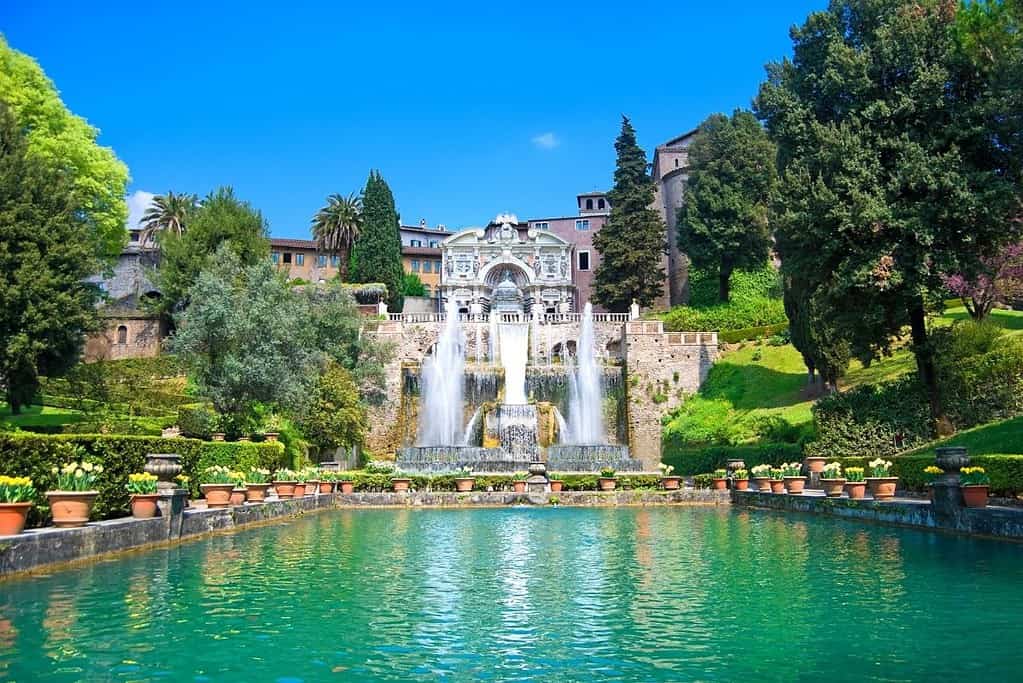
Villa d’Este in Tivoli, Italy, is a UNESCO World Heritage Site renowned for its exquisite gardens and stunning Renaissance architecture. Built-in the 16th century, this magnificent villa was originally designed as a residence for Cardinal Ippolito II d’Este. The villa’s terraced gardens are a masterpiece of Italian Renaissance landscape design, featuring intricate fountains, waterfalls, and a vast array of vibrant plant species. The Palace of the Governorate, adorned with beautiful frescoes, serves as the estate’s centerpiece. Villa d’Este is a true testament to the grandeur and artistic vision of the Renaissance era, attracting visitors from around the world with its captivating beauty and historical significance.
Villa Romana del Casale

Villa Romana del Casale is a UNESCO World Heritage Site in Sicily, Italy. This ancient Roman villa showcases some of the world’s most remarkable and well-preserved Roman mosaics. Built-in the 4th century AD, the villa was a luxurious retreat for Roman nobility. The mosaics within its walls depict various subjects, including mythological scenes, hunting scenes, and daily life in ancient Rome. The Villa Romana del Casale stands as a testament to the skill and craftsmanship of the Roman era, providing invaluable insights into the art and lifestyle of that time.
Vineyard Landscape of Piedmont: Langhe-Roero and Monferrato
The Vineyard Landscape of Piedmont: Langhe-Roero and Monferrato are a captivating UNESCO World Heritage Site in Italy. This picturesque region showcases the remarkable beauty of vineyard landscapes and the rich cultural heritage of winemaking. The rolling hills of Langhe-Roero and Monferrato are adorned with meticulously terraced vineyards, charming villages, and historic castles, creating a stunning panorama. This site is renowned for its exceptional wine production, particularly its Barolo and Barbaresco wines. Exploring the vineyards and indulging in wine tastings provides a delightful experience that allows visitors to immerse themselves in Piedmont’s timeless traditions and flavors.
Ancient and Primeval Beech Forests of the Carpathians and Other Regions of Europe

The Ancient and Primeval Beech Forests of the Carpathians and Other Regions of Europe is a prestigious UNESCO World Heritage Site. Spanning several European countries, including Albania, the site showcases exceptional beech forest ecosystems that have remained untouched for centuries. These forests represent primeval landscapes that have preserved their ecological integrity and biodiversity. Visitors to this UNESCO site can witness the majesty of towering beech trees, experience the tranquility of untouched nature, and appreciate the vital role these forests play in maintaining the health of our planet. The Ancient and Primeval Beech Forests of the Carpathians and Other Regions of Europe serve as a testament to preserving our natural heritage for future generations.
Isole Eolie (Aeolian Islands)
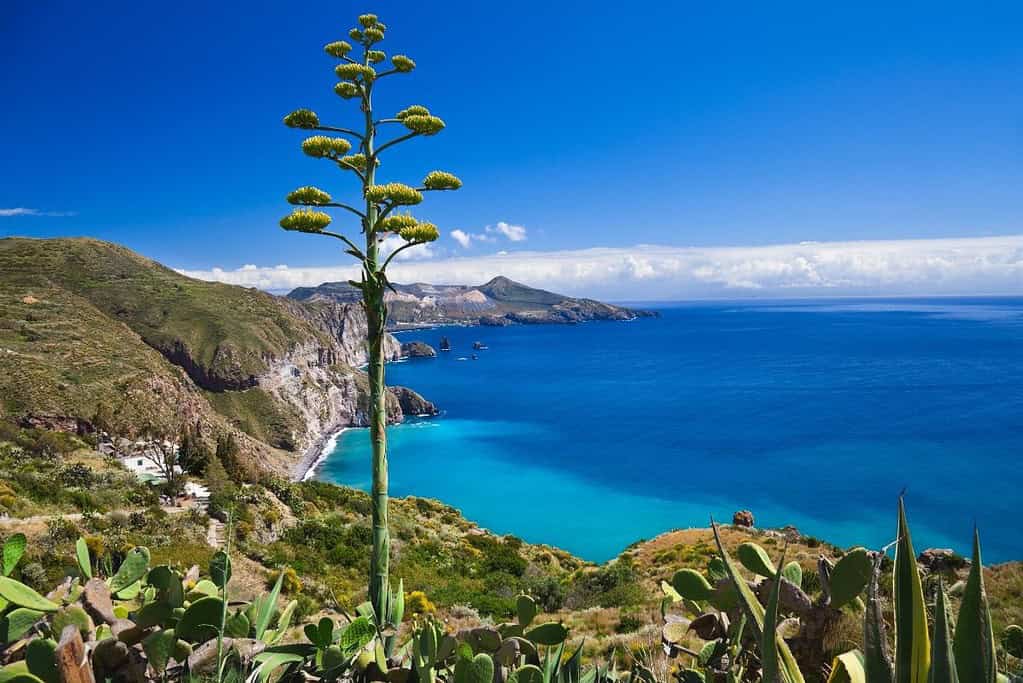
The Aeolian Islands, known as Isole Eolie in Italian, is a UNESCO World Heritage Site off the northeastern coast of Sicily, Italy. This enchanting archipelago comprises seven stunning volcanic islands: Lipari, Vulcano, Salina, Stromboli, Filicudi, Alicudi, and Panarea. The Aeolian Islands are renowned for their exceptional natural beauty, featuring rugged coastlines, crystal-clear waters, and dramatic volcanic landscapes. Each island possesses its unique charm and allure, offering visitors a range of experiences, from exploring ancient archaeological sites to indulging in the pleasures of pristine beaches and vibrant coastal villages. The Aeolian Islands are truly a captivating destination where nature and history intertwine to create a memorable and awe-inspiring experience for all who visit.
Monte San Giorgio

Monte San Giorgio, located in Switzerland, is a UNESCO World Heritage Site renowned for its exceptional paleontological significance. This majestic mountain rises above the picturesque Lake Lugano, offering breathtaking views of the surrounding landscape. The site boasts an extensive collection of marine fossils from the Middle Triassic period, providing invaluable insights into the evolution of marine life over 240 million years ago. The exceptionally preserved fossils found here include diverse marine organisms, ranging from ammonites and fish to reptiles and plants. Monte San Giorgio stands as a testament to our planet’s ancient history and is a captivating destination for scientific researchers and curious visitors alike.
Mount Etna
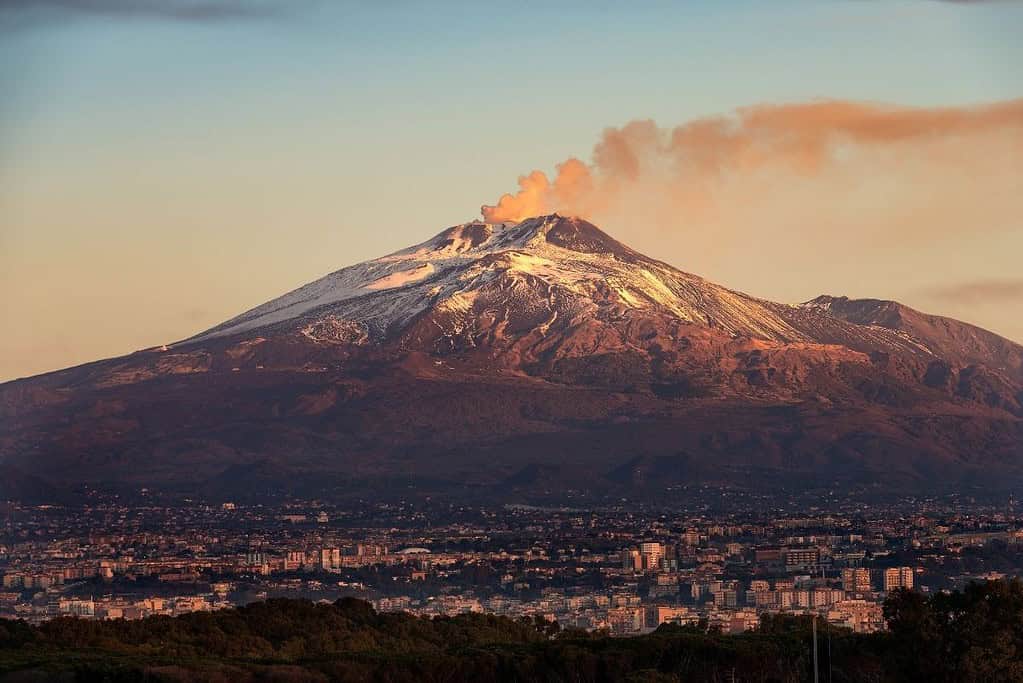
Mount Etna, located in Sicily, Italy, is a UNESCO World Heritage Site of outstanding universal value. It is one of the world’s most iconic and active volcanoes, with a history of eruptions dating back thousands of years. Mount Etna, rising majestically over the surrounding landscape, offers breathtaking views and unique geological features. Its volcanic activity has shaped the region, creating fertile soils and diverse ecosystems. The site is a geological wonder and holds cultural significance, as it has been the subject of myths, legends, and scientific research throughout history. Mount Etna stands as a testament to nature’s awe-inspiring power and beauty.
The Dolomites

The Dolomites, located in northern Italy, is a breathtaking UNESCO World Heritage Site renowned for its stunning natural beauty. This majestic mountain range captivates visitors with its towering peaks, dramatic cliffs, and enchanting valleys. The Dolomites offer diverse landscapes, including lush meadows, crystal-clear lakes, and pristine forests. It is a paradise for outdoor enthusiasts, providing countless hiking, skiing, climbing, and other adventure sports opportunities. Beyond its remarkable physical features, the Dolomites also hold significant cultural value, with traditional mountain villages, ancient churches, and historical sites dotting the region. Whether exploring its picturesque trails or simply taking in the awe-inspiring vistas, the Dolomites never fail to leave a lasting impression on those fortunate enough to experience its grandeur.
Italy UNESCO tentative list
- Lake Maggiore and Lake D’Orta Lakelands
- Hanbury botanical gardens
- Orvieto
- Via Appia “Regina Viarum”
- Villas of the Papal Nobility
- Salento and the “Barocco Leccese”
- Cattolica Monastery in Stilo and Basilian-Byzantine complexes
- Archipelago of La Maddalena and Islands of Bocche di Bonifacio
- Mothia Island and Lilibeo: The Phoenician-Punic Civilization in Italy
- Bradyseism in the Flegrea Area
- Cascata delle Marmore and Valnerina: Monastic sites and ancient hydrogeological reclamation works
- Pelagos: The Cetacean Sanctuary
- Island of Asinara
- Sulcis Iglesiente
- The Marble Basin of Carrara
- The Transhumance: The Royal Shepherd’s Track
- Volterra: Historical City and Cultural Landscape
- The Aniene valley and Villa Gregoriana in Tivoli
- The Murge of Altamura
- Karstic caves in prehistoric Apulia
- Citadel of Alessandria
- Massif du Mont-Blanc (inscription comme patrimoine naturel transfrontalier, avec France et Suisse)
- The cultural landscape of the Benedictine settlements in medieval Italy
- Les Alpes de la Méditerranée
- The Cultural Landscape of Civita di Bagnoregio
- Evaporite karst and caves of Emilia Romagna Region
- Via Francigena in Italy
- Art and Architecture in the Prehistory of Sardinia. The domus de janas.
- Eocene Marine Biodiversity of the Alpone Valley
- Historical theatres of the Marche Region
- Nuragic Monuments of Sardinia
- The system of the Ville-fattoria in Chianti Classico
Tours in Italy
Our choices of tours in Italy are divided into thematic features such as Rome, Florence, and Amalfi Coast Experience.
